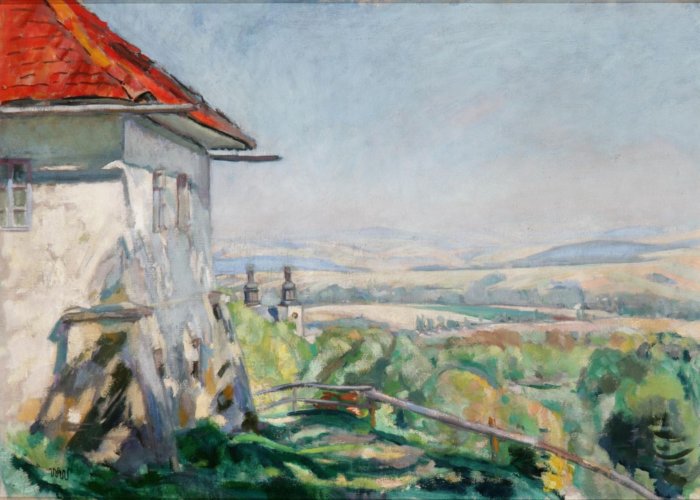Description:
Wojciech Weiss (1875 – 1950) was born in Romania, from where in 1888 he and his parents moved to Poland. After graduating from the Krakow Gymnasium, he began studying at the School of Fine Arts. Numerous European travels allowed the artist to get acquainted with the contemporary artistic trends, the reception of which can be found in his work. At the age of just 23, he debuted at an exhibition at the Warsaw Society for the Encouragement of Fine Arts. Recognized as a promising talent, he was a member of the Polish Artists’ Association “Art” a year later. For years he regularly exhibited his paintings, winning numerous awards. His work can be divided into stylistically different periods. The first, referred to as expressionist, permeated with symbolism, was characterized by works inspired by Edward Munch’s work. The paintings painted with a dark palette were full of unease and pessimism. The next – white period – takes its name from the artist’s search for light. The works of this period, painted in a bright palette, are full of joy of life. Towards the end of his life he focused on the trend of socialist realism, adapting to the current realities.
Description of the painting:
The painting shows the panorama of Kalwaria Zebrzydowska seen from a hill. The left part of the painting field is occupied by a corner of a white building covered with red tiles. The space of the hill is surrounded by a low balustrade forming a viewing point. The second plan captures the view below the hill. It shows the crowns of trees from behind which, on the left side, two towers of the Passion and Mary Sanctuary of the Bernardines emerge. The next plans show strips of fields and further blurred outlines of mountains.
The artist uses a bright, pastel palette of colors. The composition is based on the principles of aerial perspective – the first plan of the work is shown in intense colors, with moving into the depths of the painting the colors fade, and the landscape becomes almost translucent. The walls of the building and the grass-covered ground next to it form the space on which the artist conveys light phenomena, showing the way light falls and the shadows cast on it. The way the first plan is composed gives the impression that the viewer is part of the painting. His place is at the viewing point, next to the walls of the building. This invites to look at the landscape. The use of a subdued palette of colors and the way the view is composed creates an impression of harmony and evokes a feeling of peace.


